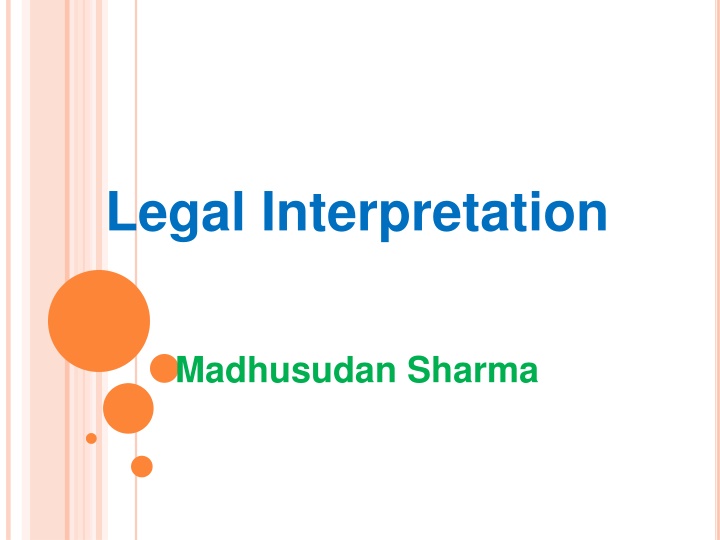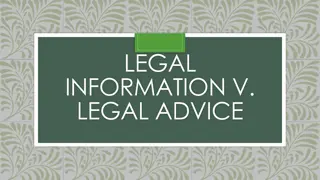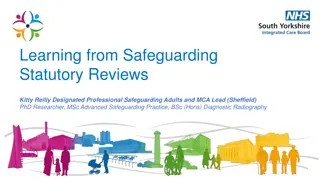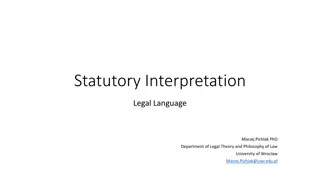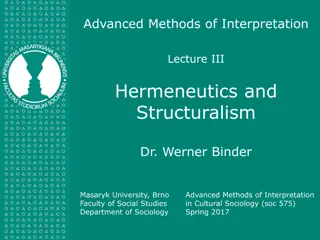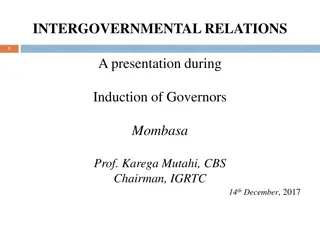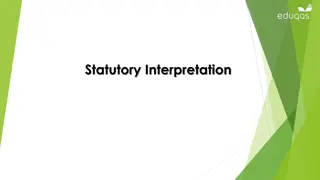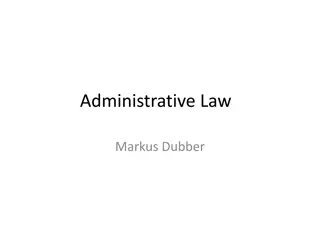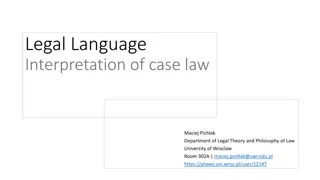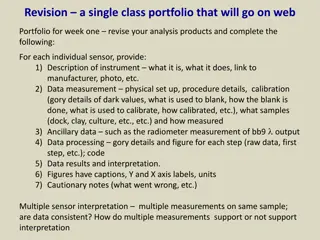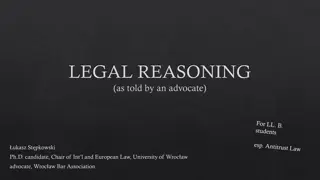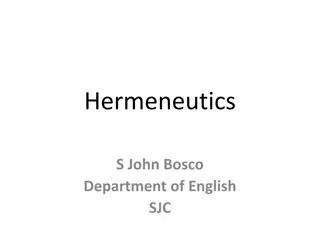Legal Interpretation and Statutory Construction Guidelines
Legal interpretation and statutory construction present challenges when new laws are enacted. Courts must interpret statutes based on their popular sense, literal construction, and mischief rule to achieve the intended purpose. Sometimes, even clear language can pose difficulties in legal cases.
Download Presentation

Please find below an Image/Link to download the presentation.
The content on the website is provided AS IS for your information and personal use only. It may not be sold, licensed, or shared on other websites without obtaining consent from the author.If you encounter any issues during the download, it is possible that the publisher has removed the file from their server.
You are allowed to download the files provided on this website for personal or commercial use, subject to the condition that they are used lawfully. All files are the property of their respective owners.
The content on the website is provided AS IS for your information and personal use only. It may not be sold, licensed, or shared on other websites without obtaining consent from the author.
E N D
Presentation Transcript
Legal Interpretation Madhusudan Sharma
Whenever any new dispension comes into force it brings along a large number of challenges. The parties to litigation make effort to project a view point suitable to each one of them confronting the courts with the gigantic task of implementing the provision of a new statute rolling out of the new regime in a manner as to achieve its primary object. Justice MM Kumar, J R Varadharajan, and Ms Deepa Krishan, NCLT (IBC) 190 (PB) / 2017 16.02.2018 4
INTERPRETATIONOF STATUTES Word of everyday use must be constructed in its popular sense When material words are capable of two meanings, one of which is likely to defeat or impair the purpose and policy of the Act and another likely to assist achievement then courts would prefer the later. Principle of Literal construction. Where the words of a statute are plain, precise and unambiguous, the intention of the Legislature is to be gathered from the language of the statute itself and no external aid is admissible to construe those words. 5
MISCHIEFRULE Get an exact conception of the aim, scope and object of the whole Act to consider: What was law before the Act was passed? What was the mischief and defect for which the law had not provided? What remedy Parliament has resolved and appointed to cure the disease? and The true reason of the remedy And then the judges have to make such construction as shall suppress the mischief, and advance the remedy, and to suppress such inventions and evasions for continuance of the mischief. 6
Sometimes clear and simple language may also pose great difficulty In PV Narashimha Rao v. State (CBI), regarding bribes paid for defeating no confidence motion. Held by majority, a member who voted in parliament after receipt of bribe cannot be prosecuted due to immunity under Article 105(2). However illegal gratification for abstaining from voting was not entitled to immunity. Article 105 (2) of the Constitution No member of Parliament shall be liable to any proceedings in any court in respect of anything said or any vote given by him in Parliament or any committee thereof,..... 7
AIDSTO INTERPRETATION Internal and External aids: Internal Aids those found within the statute: Title or Preamble of the statute, Definitions, Chapter Headings, Marginal Notes, Punctuations, Provisos, Explanation, Saving Clauses and non-obstante Clauses. External Aids not contained in the statute: Historical background, Statement of objects and reasons, original Bill as drafted and introduced, Debates in the Legislature, State of things at the time a particular legislation was enacted, Judicial construction, Legal dictionaries and Commonsense. 8
Jai Hind Thanks Madhusudan Sharma Advocate, Insolvency Professional, FCS, FCMA madhusudan.ip@outlook.com 9868872918 Website: www.madhusudansharma.in 9
